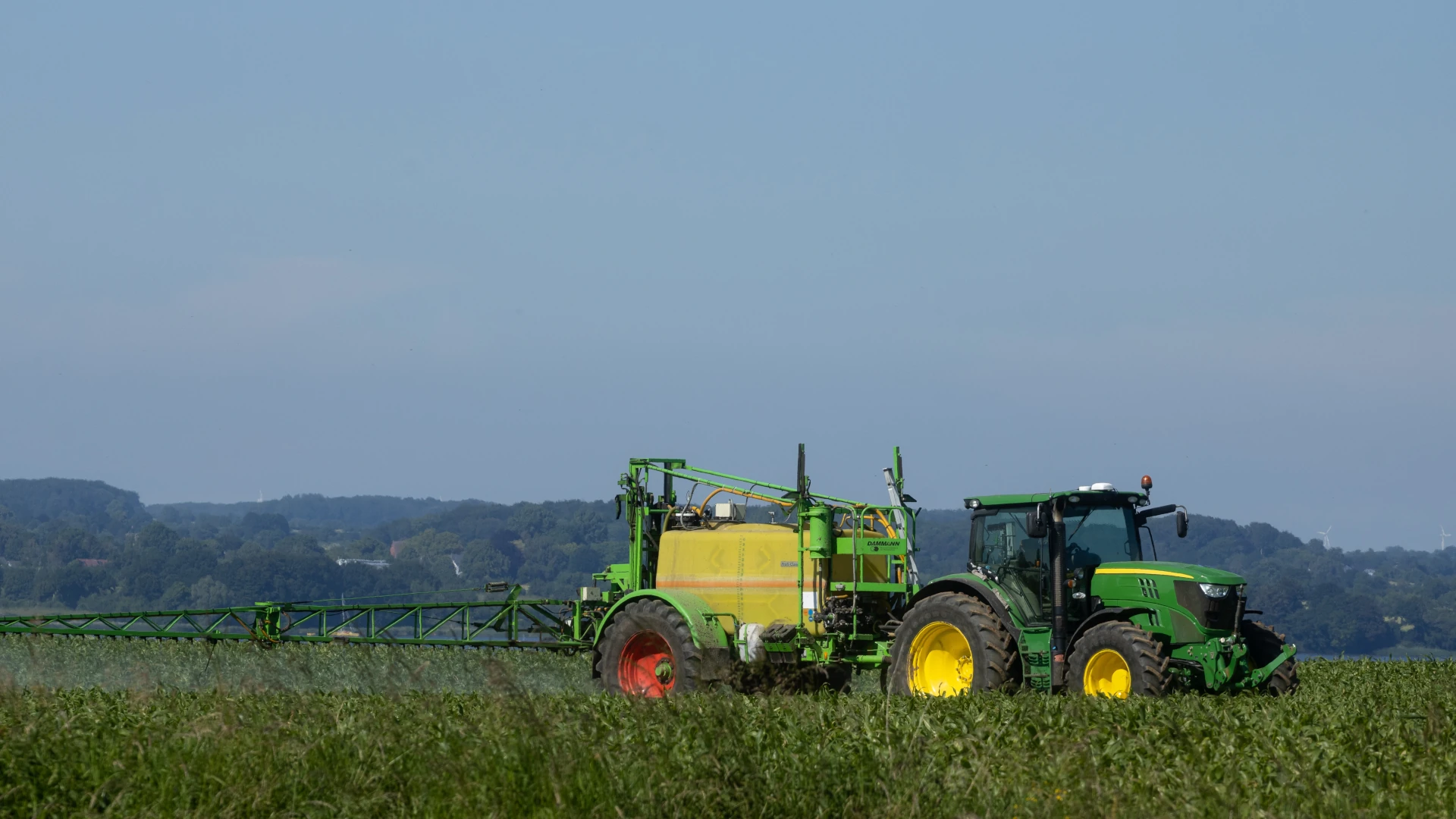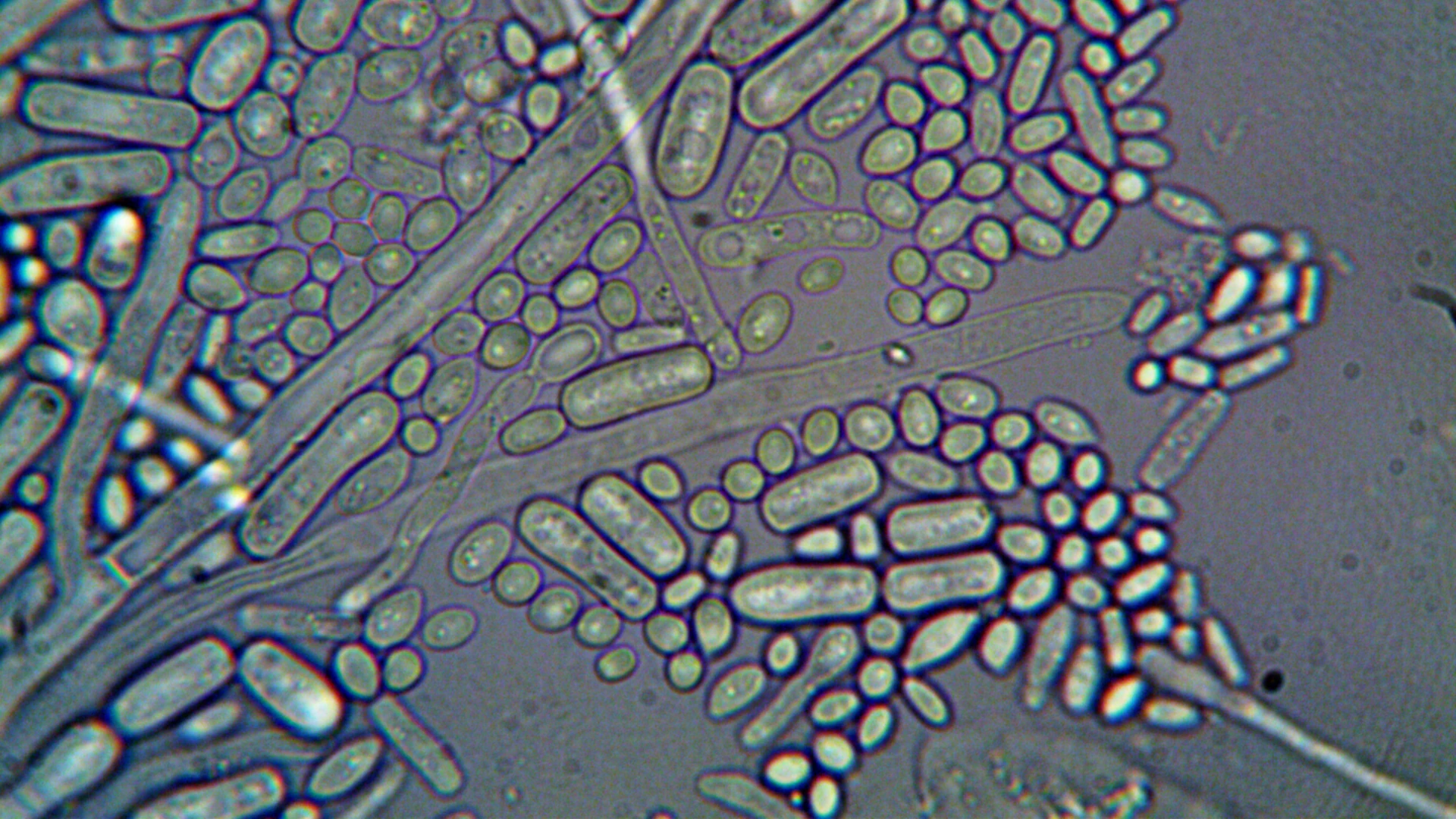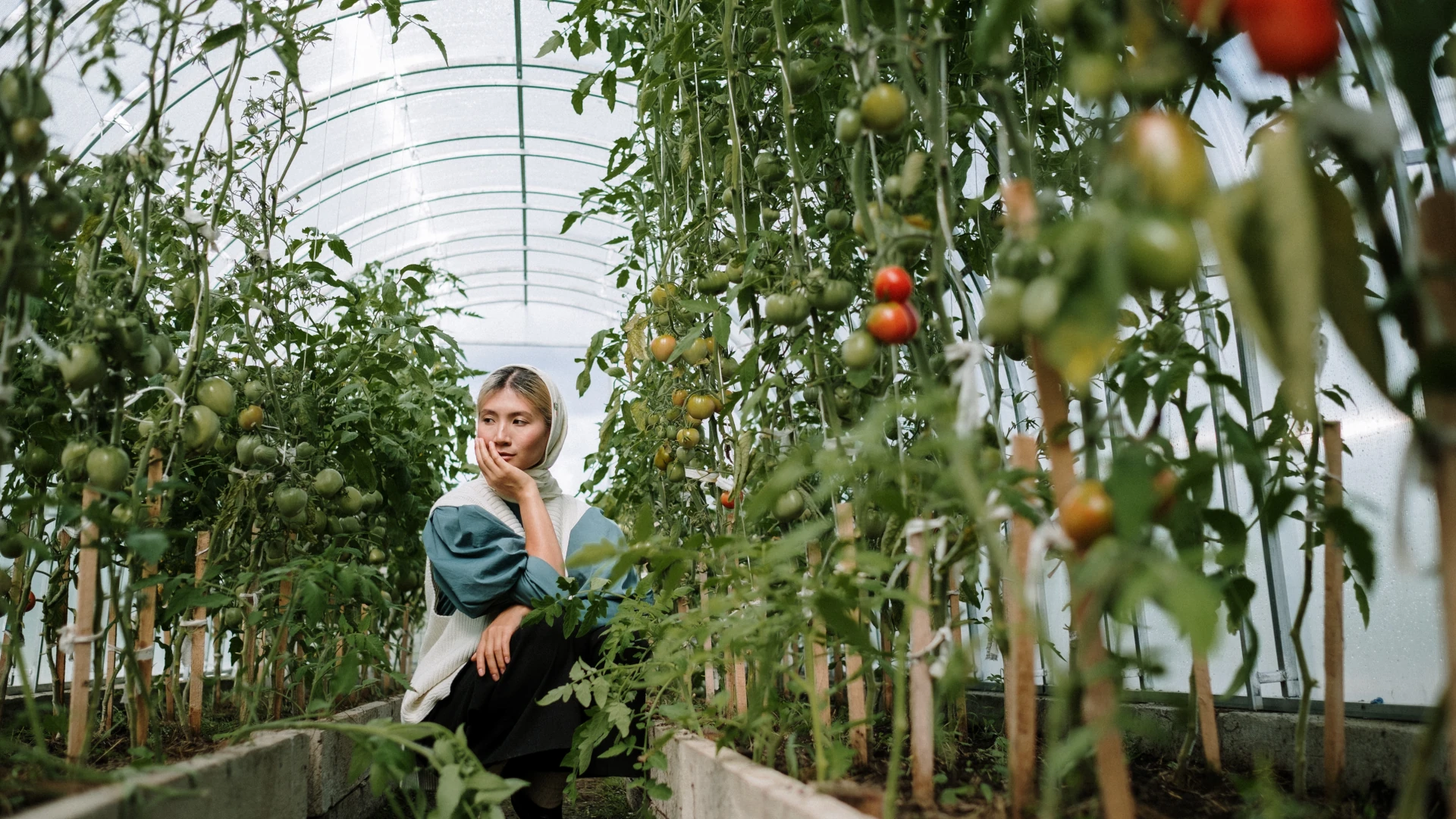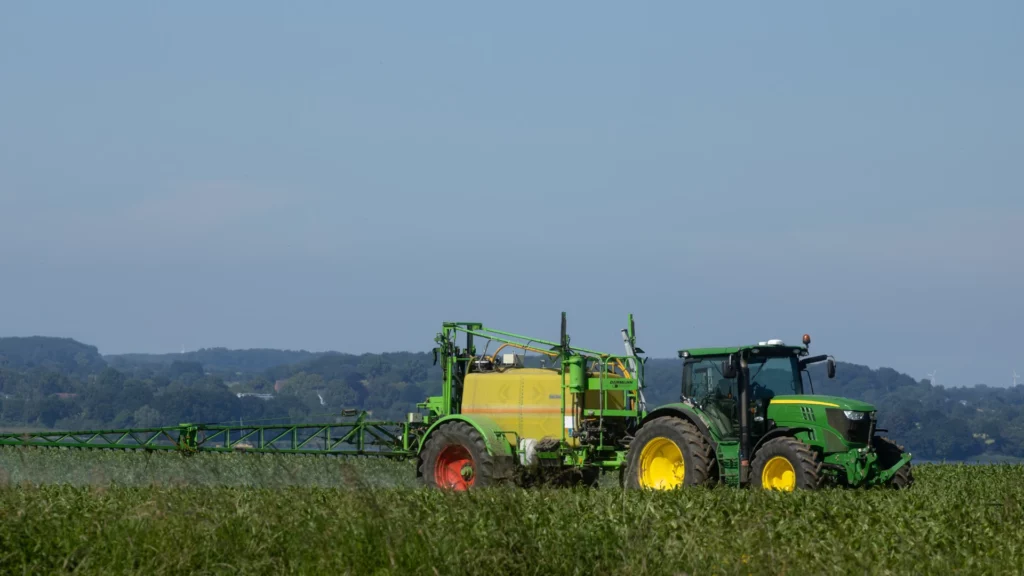There’s been a rising interest in sustainable solutions to enhance soil health and agricultural productivity, and one foundational approach has been the adoption of biology in the utilization of microbial fertilizers. These innovative products harness beneficial microorganisms’ potential to boost nutrient availability, stimulate plant growth, and address environmental concerns.
Microbial fertilizers offer a substantial advancement in agriculture technology, providing an eco-friendly option to conventional chemical fertilizers. Through plant-microorganism symbiosis, these biofertilizers establish a harmonious soil ecosystem, fostering substantial plant growth and adaptability.
This article highlights the importance of microbial fertilizers, including their potential to transform soil health, and the role they partake in shaping a sustainable future within modern agriculture.

Understanding Microbial Fertilizers
Microbial fertilizers, or biofertilizers, are gaining traction as eco-friendly substitutes for chemical counterparts in modern agriculture. Made up of beneficial microorganisms like fungi, algae, and bacteria, these biofertilizers form beneficial connections with plants, contrasting with chemical fertilizers reliant on synthetic substances.
This fosters nutrient assimilation, enhances soil quality and fertility, and stimulates plant growth. As a result, microbial fertilizers offer a greener approach to agriculture, promoting both productivity and environmental well-being. This comprehensive method guarantees crop health and promotes eco-friendly farming practices.
A key distinction between microbial fertilizers and chemical fertilizers lies in their approach. Chemical fertilizers directly supply essential nutrients to plants, whereas microbial fertilizers operate indirectly by enhancing nutrient accessibility through natural processes. This approach not only delivers nutrients but also gradually enhances soil health over time. A recent study by the National Center for Biotechnology Information highlights that plants utilize only 30-40% of nutrients from conventional chemical fertilizers.
Alternatively, microbial fertilizers offer various benefits for sustainable agriculture. They minimize dependency on synthetic chemicals and enhance soil fertility by boosting organic matter content and promoting beneficial microbial functions.
Moreover, they naturally promote plant resistance to diseases and pests. By triggering the plant’s immune system through symbiotic interactions with beneficial microorganisms, farmers can reduce the need for harmful pesticides. Microbial fertilizers also offer an eco-conscious and sustainable approach to enhance crop productivity while tackling environmental impact. Their unique composition of beneficial microorganisms distinguishes them from conventional chemical fertilizers, offering numerous benefits for both farmers and the ecosystem as a whole.

Role of Microorganisms in Soil Fertility
Microorganisms are pivotal for soil fertility, driving nutrient cycling and availability for plant growth. They break down organic matter into simpler forms that plants can easily absorb, converting it into absorbable nutrients like nitrogen, phosphorus, and potassium through mineralization. A diverse microbial community enhances soil structure by creating a fertile environment through nutrient availability and supporting plant growth. Some microbes also form symbiotic relationships with plants, aiding nutrient uptake like nitrogen fixation, and producing antimicrobial compounds.
Besides nutrient cycling, microorganisms enhance soil structure, water retention, disease resistance, and overall environmental resilience. Nurturing a balanced microbial ecosystem benefits sustainable agriculture. Practices like reducing tillage, using organic amendments, and minimizing chemical inputs enhance soil fertility and minimize environmental impact by harnessing microbial potential.

Advantages of Microbial Fertilizers
Microbial fertilizers bring significant benefits in enhancing nutrient absorption by plants. Water and nitrogen are regarded as the primary factors crucial for plant development. Beneficial microorganisms, through symbiotic interactions with plant roots, help in the uptake of vital nutrients like nitrogen, phosphorus, and potassium. This promotes efficient nutrient exchange between microorganisms and plants, fostering healthier plant growth.
By introducing beneficial microorganisms to the soil, these fertilizers enhance soil structure and water retention, ensuring that the plants have access to essential nutrients and moisture. This process enhances nutrient absorption in plants, creating a richer soil ecosystem.
Another benefit provided by microbial fertilizers is the decrease in chemical runoff and its impact on the environment. Contrary to conventional chemical fertilizers, microbial fertilizers homogenize with natural soil processes, terminating the need for synthetic chemicals that can contaminate the water and impair aquatic organisms.
Types of Microbial Fertilizers
Microbial fertilizers can be categorized into various types, each with unique compositions and functions:
-
Nitrogen-fixing Microbial Inoculants
The most common type of microbial fertilizer is the nitrogen-fixing microbial inoculant. This type includes nitrogen-fixing bacteria that establish symbiotic partnerships with plants, transforming atmospheric nitrogen into forms easily assimilated by plants. These extraordinary microorganisms possess the capacity to convert atmospheric nitrogen into plant-accessible forms, commonly known as Plant Growth Promoting Microorganisms (PGPM).
Incorporating these inoculants into the soil offers a way for farmers and gardeners to decrease their dependence on synthetic nitrogen fertilizers while maintaining vigorous plant growth.
-
Phosphate-solubilizing Bacteria and Fungi
This microbial fertilizer consists of microorganisms that can break down soil-bound phosphorus into forms that plants can absorb. This promotes improved plant growth by enhancing root development, flowering, and fruiting across various crop types.
-
Plant Growth-promoting Rhizobacteria (PGPR) and Mycorrhizal Fungi
PGPR is another type of microbial fertilizer that forms a beneficial partnership with plant roots. This includes helpful bacteria that boost nutrient absorption, stimulate root development, and provide defense against harmful pathogens. These bacteria also create natural compounds that work as growth regulators, adding to the overall health and strength of the plants.
Moreover, mycorrhizal microbial fertilizers consist of fungi that create partnerships with plant roots, assisting in nutrient absorption and enhancing soil structure. These fungi establish mutually beneficial connections with plant roots, extending their reach into the soil and improving nutrient uptake. Mycorrhizal fungi enhance the absorption of water, phosphorus, and other vital nutrients for optimal plant development, providing customized solutions to tackle specific nutrient deficiencies and encourage sustainable farming methods.

Applications and Benefits
Microbial fertilizers offer a promising remedy for promoting crop yield and overcoming the limitations of conventional fertilizers by enhancing their natural defense mechanism and disease resistance in plants. Through a symbiotic relationship with plant roots, these microorganisms help plants withstand environmental challenges such as drought, salinity, and temperature fluctuations.
Additionally, microbial fertilizers aid soil restoration and rejuvenation of degraded lands, addressing soil fertility depletion and land degradation mostly due to intensive farming. They introduce beneficial microorganisms that facilitate nutrient cycling, organic matter breakdown, and soil structure improvement, resulting in enhanced soil fertility, water retention, and eventually, marginal lands ecosystem restoration.
These microbial cells establish themselves in areas like the rhizosphere, rhizoplane, or within the roots. To be effective as biofertilizers, microorganisms are carefully chosen and evaluated for their ability to promote plant growth and effectively colonize. When successful, these organisms:
- Simplify complex organic compounds, such as nitrogen, into easier-to-absorb forms for plants.
- Enhance the plant’s metabolism, aiding in energy synthesis and transformation.
- Promote interactions with other beneficial soil microorganisms.
“These fertilizers provide environmentally friendly alternatives to harmful synthetic inputs, promote soil microbiome diversity, and align with sustainable agriculture practices.”

Microbial Fertilizers and Organic Farming
Modern society’s increasing focus on sustainable and environmentally mindful farming has led to a rise in organic agriculture. At the heart of this movement is the adoption of microbial fertilizers that are crucial in nurturing soil fertility and promoting robust plant well-being.
Microbial fertilizers, aligned with organic farming principles, avoid synthetic chemicals and adhere to closed-loop systems. Derived from beneficial microorganisms like bacteria and fungi present in healthy soils, they provide a feasible substitute for synthetic fertilizers. They also facilitate nutrient cycling, boost soil structure, and foster plant growth without resorting to detrimental chemicals.
For organic farmers, getting certified as organic is very important. To meet the rules set by certifiers, farmers need to follow strict guidelines that prohibit the use of synthetic chemicals and GMOs. Microbial fertilizers enable farmers to nurture a harmonious alliance with nature. Unlike conventional methods that exhaust soil nutrients, these fertilizers enhance soil biology and collaborate with natural processes. This not only cultivates long-term soil health but also strengthens ecosystem resilience naturally.
Using microbial fertilizers in organic farming brings many advantages beyond just meeting certification requirements. Incorporating microbial fertilizers into organic farming not only ratifies sustainable practices but also a self-sustaining approach such as a closed-loop system. Closed-loop agriculture aims to minimize external inputs by maximizing farm resources. By utilizing beneficial microorganisms present within the ecosystem through microbial fertilizers, farmers can decrease reliance on external elements while preserving soil fertility and yield.
Developing and Applying Microbial Fertilizers
Microbial fertilizers are a revolutionary innovation in modern agriculture, utilizing natural microorganisms to boost soil health and plant growth. Beneficial microorganisms, like bacteria and fungi, are chosen through meticulous research for their capacity to enhance nutrient availability, nutrient cycling, and plant disease resistance. These microorganisms are cultivated and crafted into bio-fertilizers, simplifying application to agricultural fields.
The production process of microbial fertilizers involves carefully selecting and isolating a series of intricate microorganisms that exhibit desirable traits. These strains are then cultured in controlled environments, allowing them to multiply and thrive until it reaches sufficient quantity. The microorganisms are carefully formulated with carrier materials that provide nutrients and protection during storage and application, such as compost, vermiculite, or other organic materials. Formulation techniques may vary depending on the target crop or specific nutrient requirements. The effectiveness of biofertilizers relies not only on choosing particular microorganisms or functions but also on creating innovative formulations that guarantee the survival of introduced strains.

To achieve the best outcomes using microbial fertilizers, it’s crucial to factor in best practice elements like timing, dosages, and compatibility with other inputs. Integrating these fertilizers into current farming methods requires knowing crop needs and environmental conditions. Incorporating them can involve techniques like seed treatment, soil drenching, or foliage spraying. Following recommended application guidelines is vital to ensure successful colonization by beneficial microorganisms.
As a result, by adopting these sustainable farming practices, farmers can experience improved crop yields, healthier plants, and reduced chemical inputs through the targeted use of microbial fertilizers.
Case Studies and Success Stories
These case studies exemplify the potential of microbial fertilizers to revolutionize crop cultivation, offering sustainable solutions that contribute to healthier plants, higher yields, and a more environmentally conscious approach to agriculture.
-
Nutrient Mobilization and the Role of Root-Associated Fungi
Among root-associated fungi, one of the most extensively studied cases involves Arbuscular Mycorrhizal Fungi (AMF). These fungi, belonging to the phylum Glomeromycota, establish obligate symbiotic connections with approximately 80% of terrestrial plant species, encompassing a wide range of agricultural crops.
Considered natural biofertilizers, AMF offers the host water, nutrients, and pathogen defense in return for photosynthetic products. As essential biotic soil components, their presence enhances ecosystem efficiency. Re-establishing AMF richness can replace conventional fertilization for sustainable agriculture. Directly reintroducing AMF propagules (inoculum) into the soil is the primary strategy to achieve this.
Various factors impact inoculation success and AMF persistence, including species adaptability, competition with other soil organisms, and timing. Best practices such as tuning the inoculum to the target environment are vital to prevent failure.
Recent advancements in genomics and transcriptomics have greatly enhanced this research, leading RhizeBio Technology to explore the symbiotic relationship between humans, plants, and soil organisms. Companies like RhizeBio are revolutionizing soil testing by focusing on biofertilizers and analyzing the target environment of the rhizosphere, an intricate network of microorganisms that sustains plant growth. With this innovative approach, farmers are provided valuable insights for enhancing their crop health and productivity.
Numerous companies have produced and introduced AMF inoculants to the market which has fueled substantial expansion in the global market for mycorrhiza-based biofertilizers. Notably, countries in the Asia Pacific region, such as India and China, are displaying enthusiasm and endorsement for microbial fertilizers with projections reaching $621.6 million USD by 2025.
-
The Use of Sulfur and Oxidation in Plant Growth
Sulfur (S) is vital for plant growth, forming key biomolecules like proteins, glutathione, and vitamins. About 95% of soil S is organic (bound to carbon) and the rest (5-10%) is in inorganic forms. The primary inorganic form is sulfate (SO42−), easily taken up by plants, found in soil solution, or adhering to soil particles. For more in-depth research on soil biomolecules, the RhizeBio Soil Health Test offers a cost-effective and advanced method of soil testing. It unveils the intricate details of the soil microbiome, uncovering its biodiversity, functionality, resistance, biocontrol capabilities, hormone production, stress adaptation, and potential for nutrient cycling, to determine the best practices in applying microbial fertilizers.
Over recent decades, a global rise in sulfur (S) deficiency in agricultural soils has been observed. This is likely due to decreased atmospheric deposition of S resulting from reduced SO2 emissions and the utilization of low-S fertilizers. As a result, microbial fertilizers such as sulfur (S) fertilizers have gained more prominence, and elemental S (S0) is a prevalent form. Elemental S offers concentrated S content but requires oxidation into SO42− to be accessible to plants.
Applying S-oxidizing microbes optimizes S fertilization and reduces S leaching risks. These bacteria use S0 as an energy source, releasing sulfate for plants. The best practice recommended by scientists is to inoculate them with S0 fertilizers to accelerate sulfate conversion, potentially boosting crop yields.
Sulfur-oxidizing biofertilizers are suggested for grain and horticultural crops, including oilseeds, oats, onion, cauliflower, ginger, and garlic, resulting in enhanced disease resistance and boosted nutrient availability for plants.

Challenges and Future Perspectives
Addressing obstacles to broad adoption is essential for the future of microbial fertilizer production and distribution. Despite notable advancements in research and development of advanced formulations, there remain challenges that require attention.
One significant hurdle is the limited awareness and comprehension among farmers and agricultural professionals regarding the advantages and utilization of microbial fertilizers. Educating them through programs can help close this knowledge gap and encourage more people to use these new and helpful solutions.
Another critical challenge in shaping the future of microbial fertilizers is ongoing research and development. This challenge is highlighted during the lab-to-field transition. Microbial strains excelling in vitro often underperform in greenhouse or field trials. Predicting inoculation outcomes is complex due to limited consideration and control of variables, ignoring intricate interactions. Further research and development of advanced microbial formulations is essential to enhance the efficiency, effectiveness, and adaptability of these fertilizers.

Proper inoculant creation and application are essential for showcasing the fertilizer’s beneficial traits. Creating effective distribution networks and advanced microbial formulations are also crucial for timely access by farmers. It creates a challenge in its cost-effective production, process optimization, and efficiency of microbial fertilizers at scale.
For instance, many biofertilizers on the market exhibit issues like low cell count, poor root colonization, and contamination. These concerns destroy trust in microbial fertilizers and impact their commercial viability, it elucidates the challenges in the production and distribution of microbial fertilizers. Future collaborations among manufacturers, distributors, and agricultural organizations can enhance supply chains and their accessibility.
